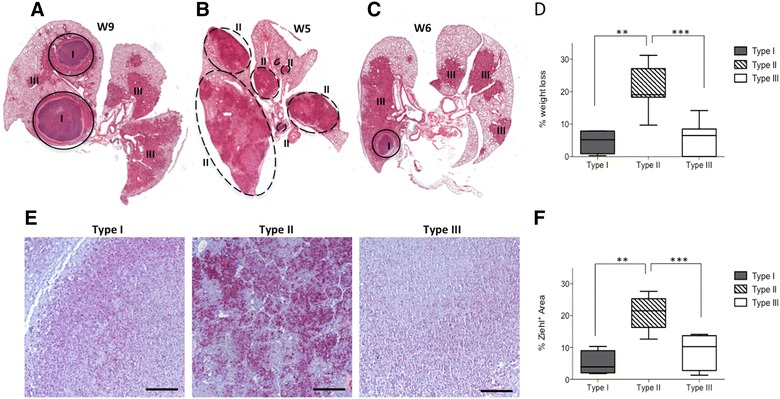Figure 7.

Type II lesions are associated with a higher pulmonary bacterial load inducing body weight loss and early mortality. A–C High resolution scanned slides of H&E stained lung from representative individual C3HeB/FeJ mice showing the intra-mouse lung lesions heterogeneity following infection. A Total lung showing typical Type I and Type III lesions at 9 weeks post-infection. B Total lung lobes showing only Type II lesions at 5 weeks post-infection. C Total lung lobes showing the presence of Type III and Type I lesions at 6 weeks post-infection. D Link between total body weight loss and Type of lesions present in the lung of the mice following infection. Analysis was conducted all over the course of infection (Between weeks 3 and 9) considering the most represented Type of lesion within the total lung of each individual (n = 26). Statistical comparison performed using Mann–Whitney’s test. **p = 0.005, ***p = 0.0001 E Representative Ziehl staining of advanced Type I, II & III lung lesions showing the bacterial density and repartition. Scale bars: 100 μm. F Link between bacterial density (% of Ziehl positive area) and Type of lesions present in the lung of the mice following infection. Analysis was conducted all over the course of infection (Between weeks 3 and 9) considering representative lesions from individual mice (n = 23). Statistical comparison was performed using Mann–Whitney’s test. **p = 0.005, ***p = 0.0001.
